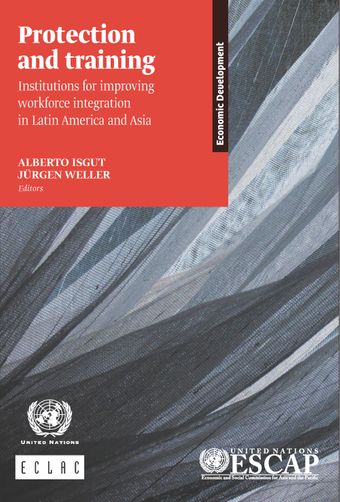- Home
- Books
- Protection and Training Institutions for Improving Workforce Integration in Latin America and Asia
- Chapter
Introduction

- Authors: Alberto E. Isgut and Jürgen Weller
- Main Title: Protection and Training Institutions for Improving Workforce Integration in Latin America and Asia , pp 19-29
- Publication Date: November 2016
- DOI: https://doi.org/10.18356/7dcf0b37-en
- Language: English Spanish
Labour relations and employment conditions are regulated through institutions that define the frame of action for the participants, through legal or administrative rules, collective bargaining and market forces. Jointly, these labour market institutions have the twin objectives of protecting the weaker players, in a market in which the power structure is unequally distributed, and of enabling the market to adjust efficiently to economic shocks. Although there is generally a very broad consensus on these twin objectives, there are also discrepancies as to what it means for certain specific institutions. The two objectives are generally present in all institutions, albeit differently weighted. For example, the key objective of institutions that protect workers in the event of unemployment is obvious; but these protection mechanisms can also make adjustment more efficient by facilitating a match between job searchers and job vacancies. Technical and vocational education and training (TVET), can improve a firm’s productivity and competitiveness; but they can also generate wage and non-wage benefits for the workers. An increase in the minimum wage favours lower-income workers and, although it generates higher costs for firms, it can also stimulate productivity improvements.
-
From This Site
/content/books/9789210575478c002dcterms_title,dcterms_subject,pub_keyword-contentType:Journal -contentType:Contributor -contentType:Concept -contentType:Institution105



